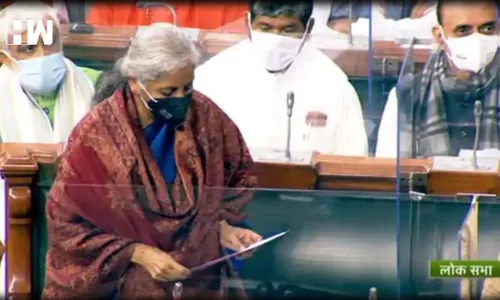New Delhi: Setting the tone for the Union Budget 2022-23, to be presented on Tuesday, the Economic Survey 2021-22 tabled in the Parliament on Monday stressed on the need for the government to provide a buffer against stresses such as the uncertainty in the global environment, the cycle of liquidity withdrawal by major central banks, etc.
Here are five significant pointers from the Survey that set the stage for the upcoming Budget:
1. The Survey has pointed out the “strong revival in revenues” — being 67% higher year-on-year in April-November 2021 — to peg that the government has fiscal space “to provide additional support if necessary”.
2. It has flagged inflation as a global issue in both advanced and emerging economies. In particular, it said that while the CPI inflation is within the targeted tolerance band, WPI inflation has been running in double digits. And even though this is partly due to base effects that will even out, “India does need to be wary of imported inflation, especially from elevated global energy prices”.
3. In continuation with the “barbell strategy” from previous year’s economic survey, this year’s survey has suggested using the “Agile” approach to use 80 high-frequency indicators “in an environment of extreme uncertainty”. The Agile approach, used in fields like project management and technology development, assesses outcomes in short iterations while constantly making incremental adjustments.
4. In the government’s efforts to build a post-Covid economy, the Survey has pegged that demand measures alone will not provide the solution. This is based mainly on the fact that a wide variety of factors such as consumer behaviour, technological developments, geo-politics, supply-chains, climate change could interact in unpredictable ways, and India will need to develop a supply-side strategy to deal with the long-term unpredictability of the post-Covid world.
5. The survey says that in the context of macro-economic stability indicators, vaccination progress needs to be looked at not just as a health response indicator but also as a buffer against economic disruptions caused by repeated waves of pandemic. Among other factors, this is based on the assumption that private consumption “is poised to see stronger recovery with rapid coverage in vaccination and faster normalisation of economic activity”.
As an independent media platform, we do not take advertisements from governments and corporate houses. It is you, our readers, who have supported us on our journey to do honest and unbiased journalism. Please contribute, so that we can continue to do the same in future.

